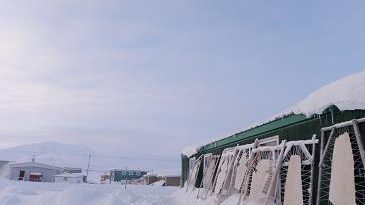Video brings students together in Canada’s North

Providing quality education to students in remote Arctic communities is a problem not only in Canada but around the circumpolar world.
Distances are great, courses are limited and in some cases, students have to leave their families and home communities in order to attend high school in larger centres.
But in the Beaufort Delta region of Canada’s western Arctic, the education council is looking to address this with a videoconferencing pilot project.
The project hooks up classrooms in remote Arctic communities like Tuktoyaktuk and Fort McPherson, with schools in Inuvik, a town of approximately 3500 people, in Canada’s Northwest Territories.
“It’s really difficult when you have some of these small schools that may only have one or two high school teachers to provide the same type of programming to their students as you would in some of our larger centres,” says Chris Gilmour, the IT Teacher Consultant with the Beaufort Delta Education Council.
“Given our geography and where we live (the videoconferencing project) is big news and it’s a big, big step forward for education in our district.”
Students see their teachers and other students on a split screen set up in their classroom. Some students say it takes time to get used to the set up, but that they are happy they stuck with it.
“The experience (made me) kind of shy at first, but then I got used to it” said Hayden Stuart, a grade 11 student in Tuktoyaktuk.
Stuart takes an English course through video conferenceing and said he would recommend it to other northern students.
“At first I was kind of cautious about e-learning but now I’m feeling pretty good about it,” he said. “I’d tell them that it was a good experience for them. It’s a good motivation and it will keep (them) on track.”
To listen to an interview with Chris Gilmour, the IT Teacher Consultant with the Beaufort Delta Education Council, on Radio Canada International, click here


